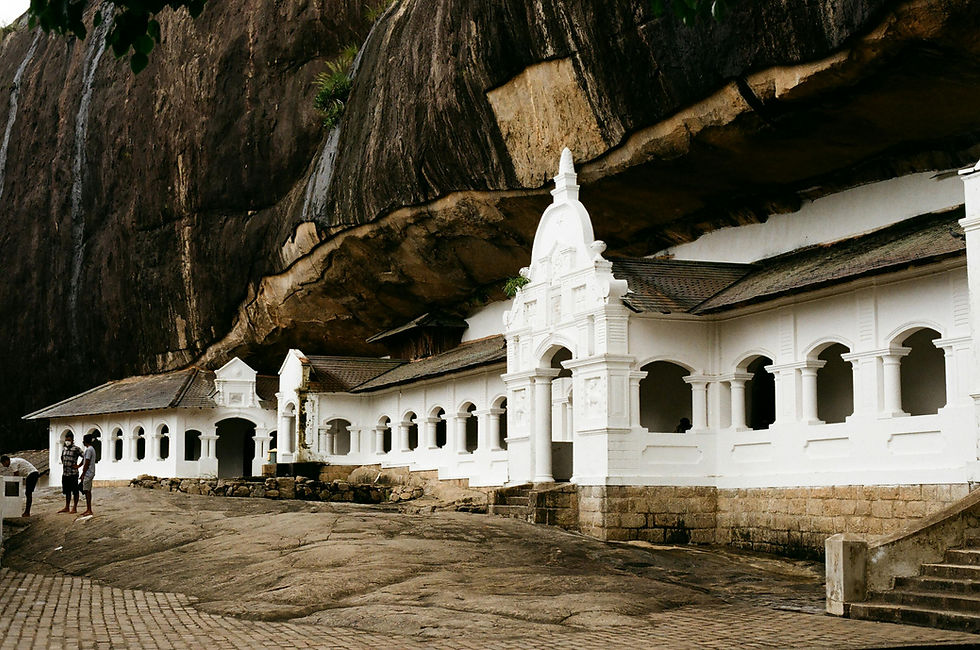Yapahuwa Rock Citadel, A Forgotten Jewell of Sri Lanka's Ancient Kingdoms
- Sonal Silva
- May 26
- 3 min read
Tucked away between Kurunegala and Anuradhapura, stands an extraordinary yet often overlooked historical marvel, the Yapahuwa Rock Citadel. Though it served as Sri Lanka's capital for only 12 years in the 13th century, its cultural, architectural, and historical significance far outweigh its brief political reign. Rising abruptly 70 meters above the surrounding plains, the citadel is frequently likened to the iconic Sigiriya rock fortress, but Yapahuwa holds its own unique mystique.

A layered legacy in stone
What sets Yapahuwa apart is its multi-tiered structure. The rock citadel unfolds in seven distinct layers, each serving a strategic or ceremonial purpose. The layout reveals a methodically designed city: an outer moat and entrance, inner defences, temple complexes, and residential structures, culminating in a steep stone staircase that leads to the Dalada Maligawa, the once sacred resting place of the Buddha’s tooth relic.
The outer moat and ramparts were the first line of defence. Once past these, visitors and invaders alike would confront the second moat and more fortifications, still visible today as remnants of brick walls and watchtowers.
This formidable construction was designed to thwart enemy advances, especially from South Indian kingdoms such as the Pandyans.
A capital born of crisis
In 1272 AD, King Bhuvanekabahu I moved the capital from Dambadeniya to Yapahuwa, recognizing its elevated and defendable position as ideal in the face of foreign invasions. With him came the sacred tooth relic of the Buddha, which was enshrined in a temple built atop the rock, the Temple of the Tooth, or Dalada Maligawa.
Though the kingdom was short lived, it flourished as a religious and cultural center, echoing with the sounds of rituals and drum beats. Sadly, the Pandyan invaders would eventually seize the city, taking the relic and plundering the treasures, followed centuries later by Portuguese colonizers who destroyed much of what remained.
The iconic stairway: Yapahuwa’s masterpiece

Perhaps the most remarkable feature of the Yapahuwa citadel is its stone stairway, a steep and ornate ascent split across three dramatic levels and built at a 70-degree angle, a defensive and architectural feat. At the final flight, two intricately carved granite lions stand guard, unlike any other lion sculptures found elsewhere in the country. Their stylized forms hint at foreign, possibly Chinese influence, supported by the discovery of over a thousand Chinese coins at the site.
The stairway is a celebration of stone craftsmanship. Dancers, musicians, elephants, lions, dwarfs, and mythical beings are etched into the balustrades and surrounding panels. A granite door frame crowns the top of the stairway, once flanked by exquisite window frames, one now displayed in the on site museum, the other preserved in the Colombo National Museum.
A temple, a summit, and a view worth the climb

Above the third level lies the remains of the Temple of the Tooth, including stone foundations, water channels, retaining walls, and scattered fragments of artwork and architecture.
Climbing higher leads to monks’ caves carved into the rock and finally to the summit plateau, where the ruins of a Dagaba and Bodhi tree enclosure await, and the panoramic views of Sri Lanka’s north central landscape stretch in every direction.
A site still holding secrets
Although human activity at Yapahuwa dates back over 5,000 years, much of the site remains unexplored. Rediscovered in the late 19th century by H.C.P. Bell, Sri Lanka’s first archaeological commissioner, Yapahuwa remains one of the country's most underappreciated cultural treasures. The lack of crowds make it an appealing alternative to the more visited heritage sites in Sri Lanka’s cultural triangle.

Yapahuwa is more than just a forgotten capital. It is a testament to the resilience of a kingdom, the artistry of ancient Sri Lankan craftsmen, and the deeply spiritual roots of a nation. Whether you’re a history buff, a cultural explorer, or simply in search of an off-the-beaten-path destination, the Yapahuwa Rock Citadel promises to transport you to a time when kingdoms rose from stone, and stories were carved into every step.





Comments